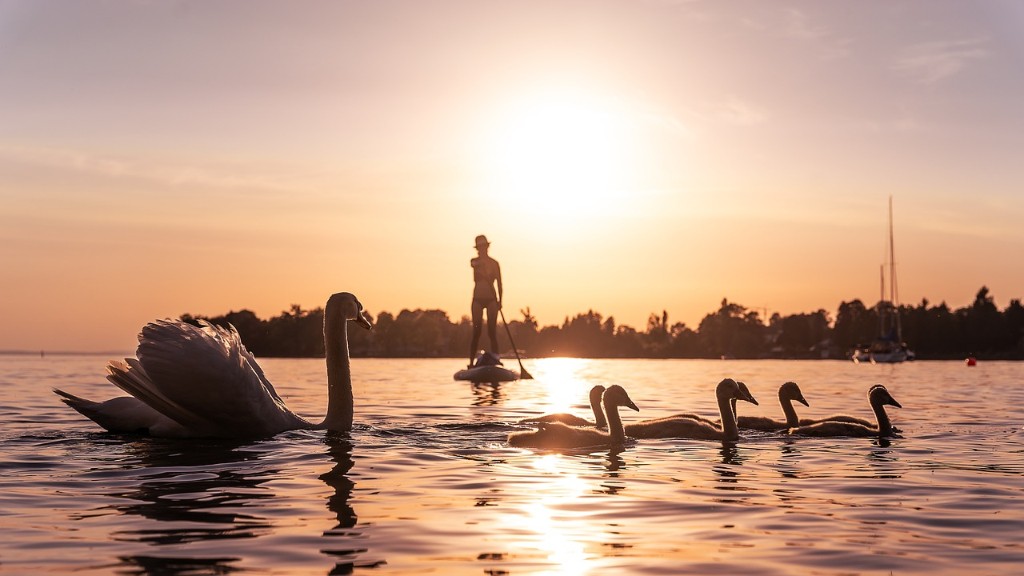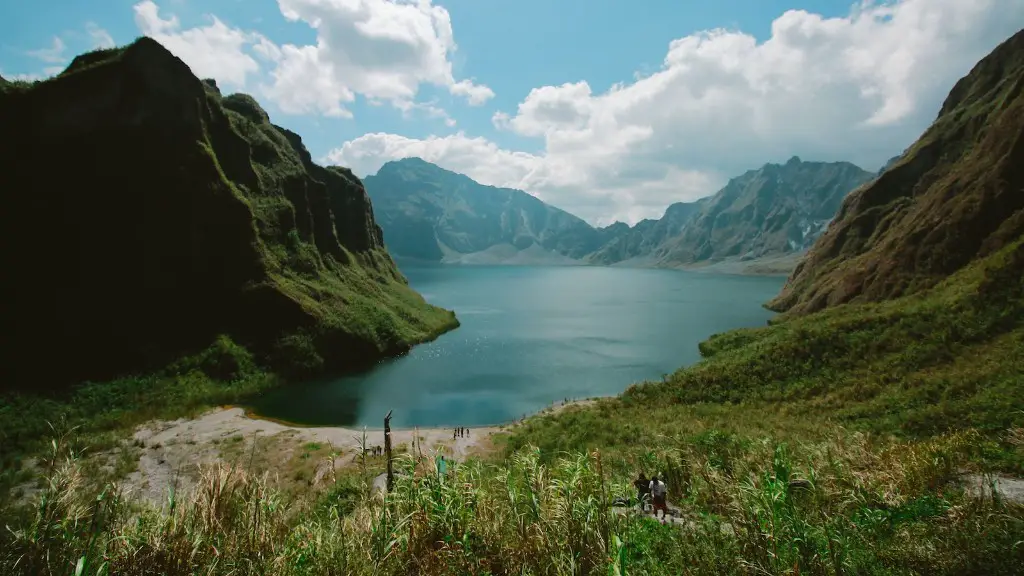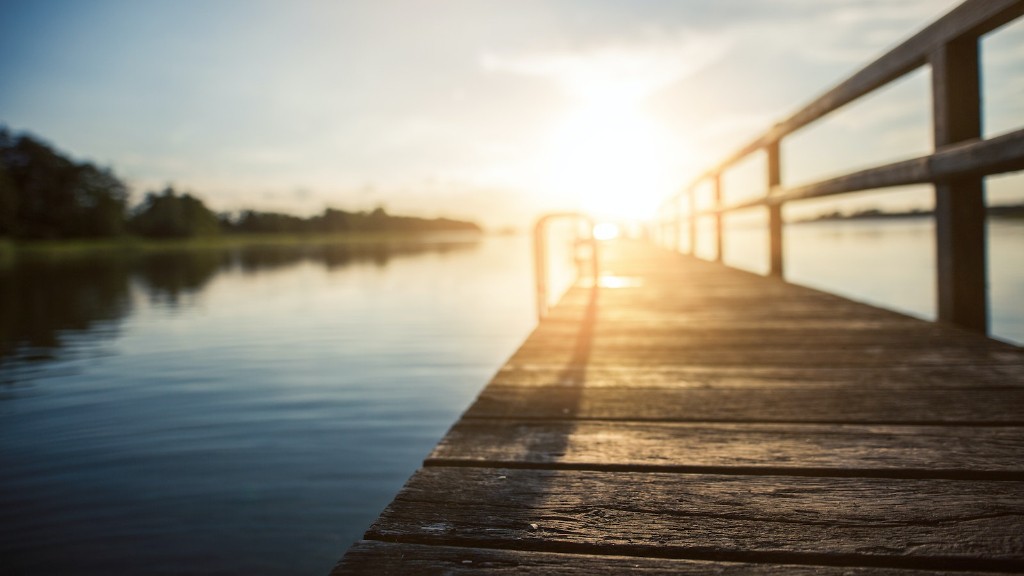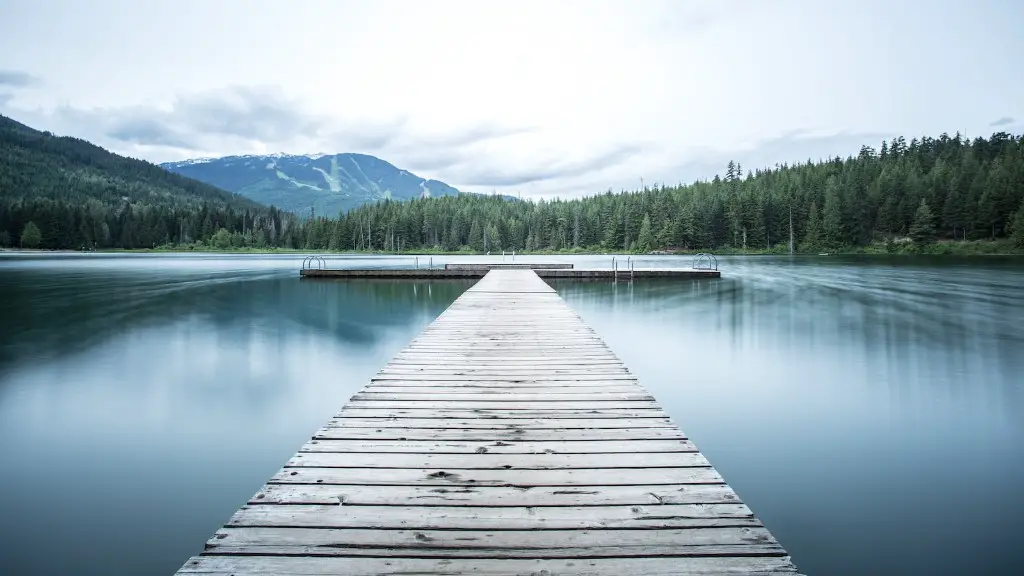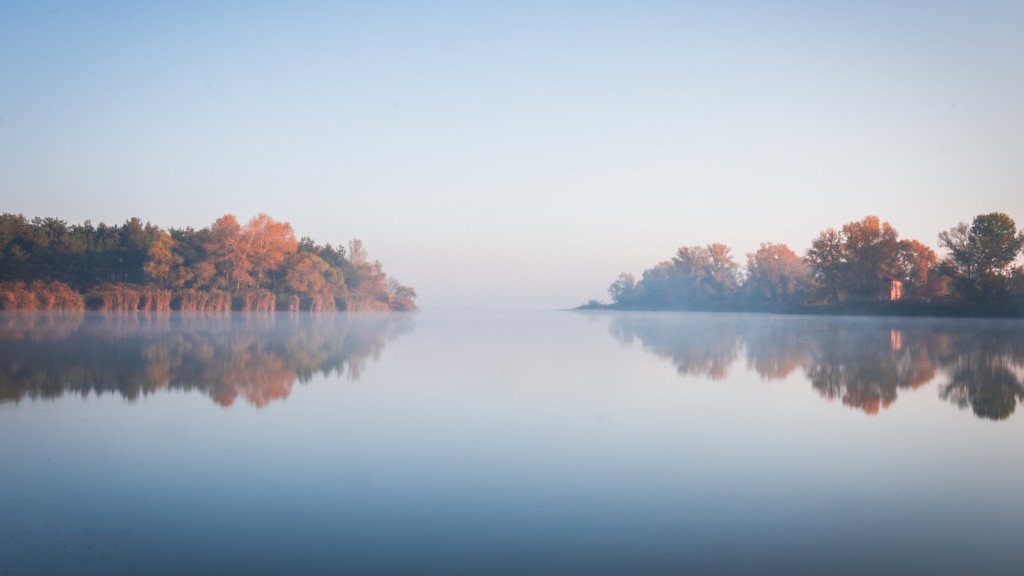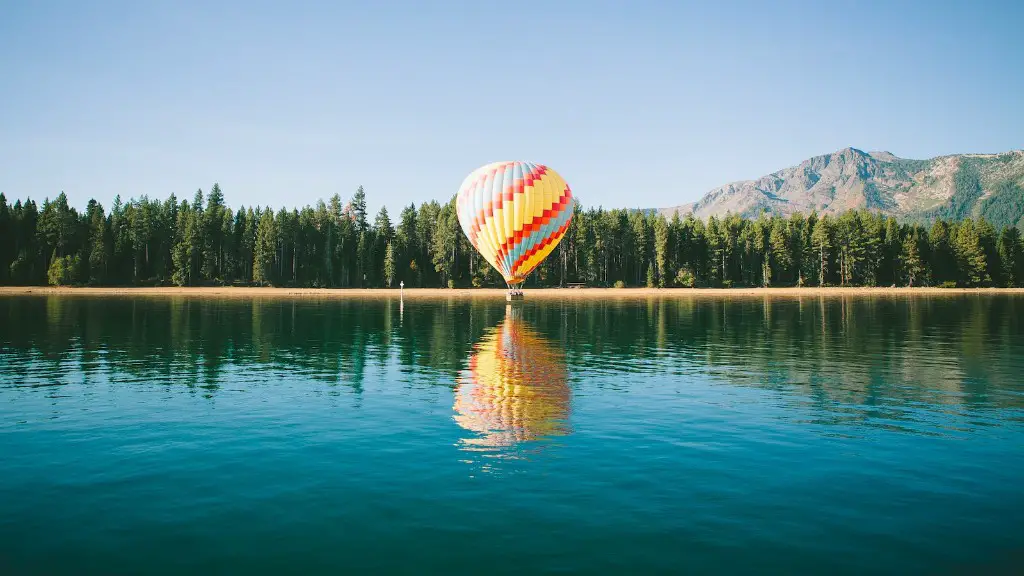Lake Superior is the largest, deepest, coldest and cleanest of the five Great Lakes. Spanning more than 200 miles in length, it holds enough water to cover the entire land mass of Canada. It’s also one of the most important freshwater sources in the world.
Unlike other bodies of water in the region that tend to thaw in Spring, Lake Superior takes a little longer to thaw due to its depth and location. In order to understand when Lake Superior thaws, it is important to examine the layers below the surface of the lake. The main source of heat for Lake Superior comes from the sun and air above the surface, but this heat only manages to penetrate the top layer of the water, the thermocline.
The thermocline, also known as the metalaaune, is a layer of water where the temperature rapidly decreases with increasing depth. The metalaaune in Lake Superior typically lies between 45 and 60 feet down, meaning it is well below the surface, where the surface air temperature has little effect. This means that, while the surface may begin to thaw in Spring, it takes longer to reach the thermocline, and thus, it takes long for the lake to thaw as a whole.
The speed of the thawing process is affected by the region’s weather patterns. Spring can arrive late in the Upper Midwest, meaning that the thawing process can be quite slow. Conversely, if spring is mild, the thaw may happen more quickly. That being said, the general pattern is that the lake begins to thaw from the south end up and works its way north. This process usually begins around late April and lasts until mid-June.
The thawing process of Lake Superior also has to take into account the cold winter temperatures, which can cause some parts of the lake to remain frozen until early July. According to the US National Oceanic and Atmospheric Administration, ice on Lake Superior can remain in some areas until early July.
The rate of thawing also depends on the thickness of the ice on the lake. Generally speaking, the thicker the ice, the longer it will take to thaw, as thicker ice takes more energy to melt. That being said, sometimes the ice can be quite thin, resulting in a more rapid thawing process. Depending on the conditions, thawing can take between one and four months.
Effects Of Thawing On Weather and Habitat
The thawing of Lake Superior can affect the region’s weather patterns, as well as local wildlife and vegetation. The rapid change in temperature as the lake goes through its thawing process can have a large effect on the region’s weather systems. For instance, the warmer temperatures brought by the thawing process can affect air and wind currents, meaning that they can be stronger or warmer than they would be during the colder months.
The thawing of Lake Superior also affects the ecology of the lake. During winter, the lake’s fish and other aquatic life depend on the ice for shelter and protection from predators. As the lake thaws, this protection is removed, leaving the lake’s inhabitants vulnerable. Additionally, the thawing of the lake also releases plant nutrients, which in turn can benefit the lake’s aquatic life.
The thawing of Lake Superior also affects the shoreline. The thawing of the lake reveals rocks and deposits, making them accessible for those who wish to explore the lake’s natural features. As the lake thaws, it also reveals various artifacts and human remains, providing a fascinating history lesson for anyone interested in the lake’s past.
Safety Considerations When Exploring Thawing Lake Superior
When exploring a thawing Lake Superior, there are many safety considerations that should be taken into account. It is important to remember that the lake is still full of ice, and so one must be careful when out on the ice. The ice can be unpredictable, and it is possible for a person to fall through if walking on the wrong spot. Additionally, the shore lines can be hazardous, with sharp rocks and debris that can cause injury.
It is also important to remember that, as the lake thaws, the water is likely to rise. This can cause strong currents and waves, making it difficult for a person to maneuver around the lake. For this reason, it is best for a person to stay near the shoreline, as this will reduce the risk of getting lost or becoming injured.
Moreover, the unpredictability of the thawing process can be dangerous. If the thawing is uneven, there can be larger areas of open water, which can make it difficult to remain oriented or gauge the safety of the water. Additionally, the ice can shift and break into unpredictable chunks, meaning that one must be prepared to act quickly in the event of danger.
Impact of Climate Change on Thawing Lake Superior
The thawing of Lake Superior is impacted by both regional and global weather patterns. In recent decades, climate change has been linked to more frequent and intense storms and higher temperatures, which can affect the thawing process. One of the clearest examples of this is the increased rate of thawing in the lake seen over the past 50 years. This means that the thawing process which used to take until early or mid June now often occurs earlier in the spring.
Climate change is also impactful due to the fact that warmer air and water can cause the ice to thaw faster. Additionally, the warmer temperatures often result in less snowfall during the winter, meaning that there is less insulation for the ice. This makes it easier for the lake to thaw, and can even result in earlier years where the lake will thaw completely.
Moreover, climate change also brings more intense storms, resulting in stronger winds and waves. These can impact the thawing of the lake by causing the ice to break into chunks and move around more quickly. This can also lead to more open water, meaning that local wildlife and aquatic life can more easily traverse the lake in search of food and shelter.
Conclusion of Impact and Prevention Efforts
The thawing of Lake Superior, while beautiful to observe, can be hazardous for those who explore the lake, and can have an adverse effect on the local environment. In order to ensure the safety of both humans and local ecosystems, it is important that we all be aware of the impact of climate change on the rate and patterns of thawing. Additionally, it is paramount that we take preventive measures to avoid further damage to the lake.
These prevention efforts can include, but are not limited to, limiting our own individual carbon footprints, being mindful of the organisms and vegetation around the lake, and being aware of the unpredictability of the thawing process. Taking these steps will ensure that all enjoy the beauty of a thawing Lake Superior, without compromising its future condition.
